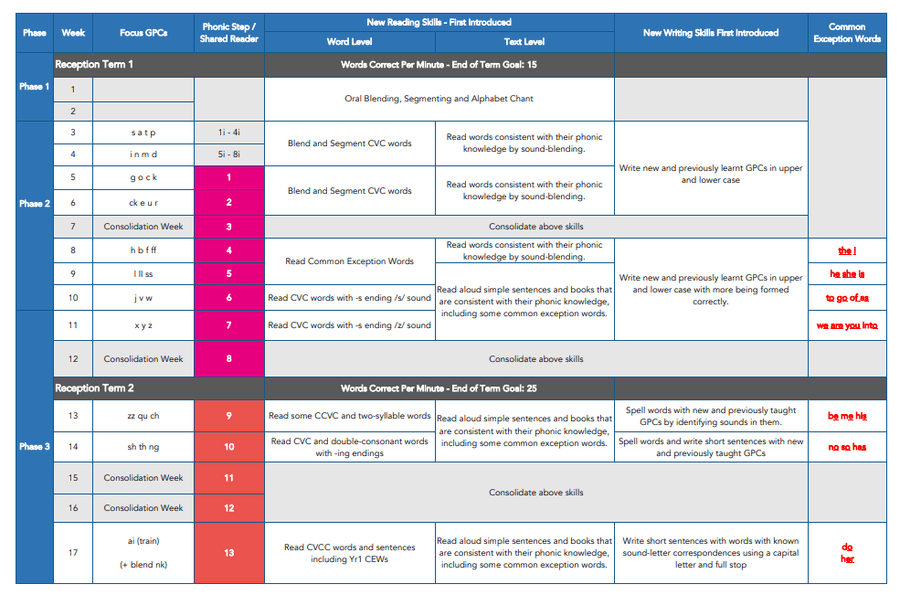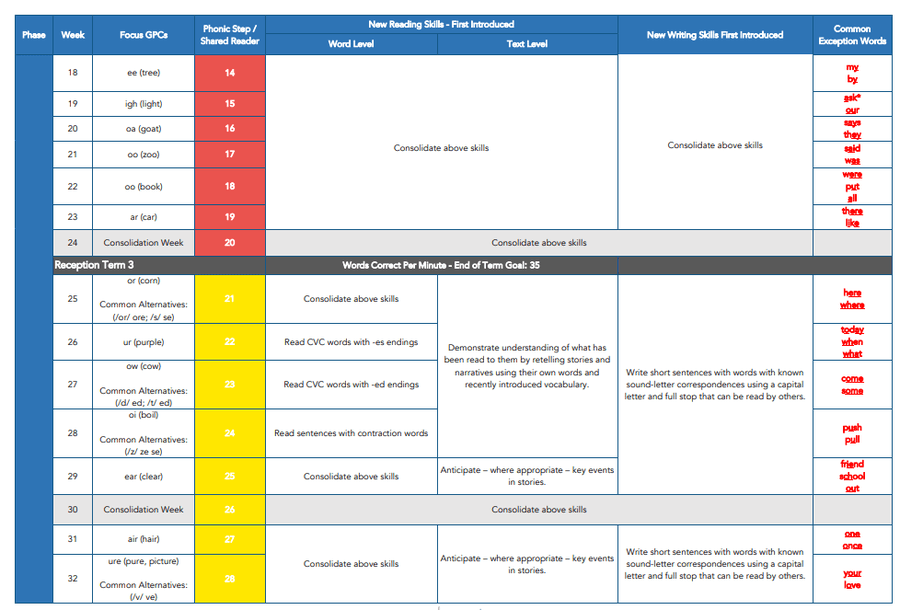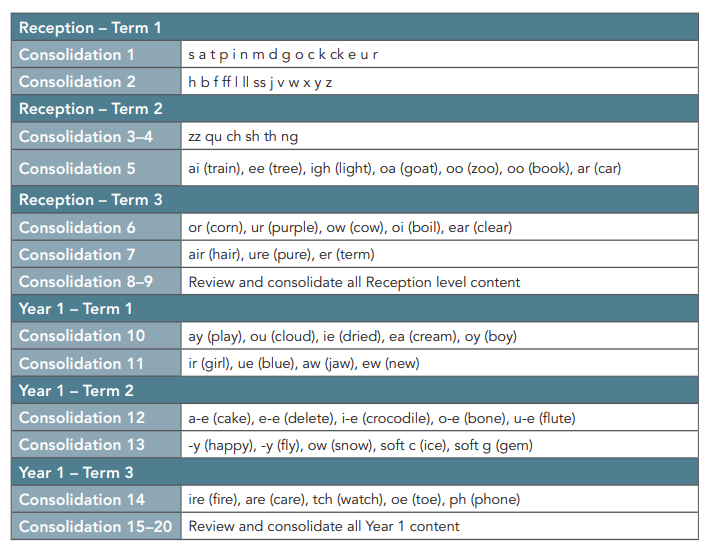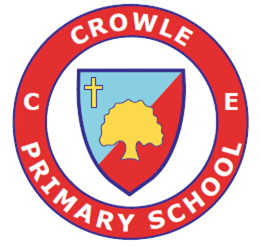Phonics
At Crowle CE First School we use FFT "Success for All" Phonics (validated scheme) to teach phonics across the school.
The FFT Phonics programme is designed for daily use from the beginning of Reception, enabling children to make a smooth transition from Reception to Key Stage 1. The daily lesson plans cover all the main Grapheme–Phoneme Correspondences (GPCs) and Common Exception Words (CEWs) to provide children with the phonic knowledge and skills required for success in the Year 1 Phonics Screening Check.
What is phonics?
Synthetic Phonics is an integrated approach to word reading that explicitly teaches the correspondences between individual letters or groups of letters and their related sounds (graphemes and phonemes), as well as the skill of blending the individual sounds together to read whole words. This skill can then be inverted so that words can be broken down (segmented) into their component sounds in order to spell them. Much evidence has been collated in recent years to show that teaching children to read words using Synthetic Phonics has a positive effect on children’s long-term ability to read and comprehend text (especially
for those younger children who might otherwise have been identified as being in danger of falling behind).
Although it is true that many English words are not entirely phonically regular, the fact remains that around 50 per cent of words are completely decodable if the reader has the necessary toolkit of GPCs (and of the remaining words, the majority have only one sound, usually a vowel sound, that is not regular). This means that if we teach children to read words using a synthetic
phonics approach, we are equipping them to read, at first try, at least half of all words in the English language and to have a good chance of working out the tricky GPC in most of the remaining words.
A phoneme is defined as the smallest unit of sound into which a spoken word can be broken down. For example, in the word ‘cat’ there are three phonemes /c/ … /a/ … /t/. In this example, each phoneme is represented by a grapheme comprised of one letter. The word ‘cheese’, in contrast, also comprises three phonemes /ch/ … /ee/ … /z/, but in this instance, the graphemes
that represent the phonemes each have two letters: ‘ch’, ‘ee’, ‘se’. Graphemes can be comprised of either one, two or three (very occasionally four) letters and there will always be the same number of graphemes in a word as there are phonemes.
In a synthetic phonics programme such as Success for All Phonics, children are first taught the most common GPCs in the English language so that they can quickly begin to apply this knowledge to read whole words (blending), and soon after, to spell them (encoding). Over the course of the programme, they will be introduced to a number of alternative ways of representing the same phonemes, including some of the less-common GPCs.
Teaching Sequence
An example of the teaching sequence is below (for Reception class).
We have very clear expectations about what sounds will be taught and when, alongside which common exception words will also be taught. These are then matched to your child's reading book (based on the phonic knowledge they have secured) in order for them to continue to practise these skills when reading (both at home and in school).



Assessment
Success for All Phonics provides a comprehensive set of phonics assessment materials to ensure that children, teachers and school leaders know exactly which phonics skills have been mastered at each stage.
Summative Assessments
Success for All Phonics provides schools with an online Reading Assessment Tool that tests children’s knowledge of GPCs, word decoding, reading fluency and comprehension. Teachers use this assessment tool every half term (6–8 weeks) to ensure that teachers and school leaders know exactly which phonics skills have been mastered by children at each phase.
Formative Assessments
Frequent formative assessment opportunities (with time in the teaching schedule to address any gaps) are built into Success for All Phonics in the form of Consolidation Weeks. These weeks are a vital part of the success of the programme as children will not always master a GPC the first time it is taught.
Formative assessment is also based on daily classroom work and observation, capturing children’s responses to questions and their oral and written contributions, where these indicate their knowledge or use of a particular GPC. Similarly, children’s interactions with books and other texts will give teachers a good indication of how well they are able to apply their phonics knowledge and skills to reading.
The table below identifies the points in the programme where formative assessment weeks are scheduled.

Assessment is used to gain a rounded picture of the individual and to give further guidance and support, if necessary. Sometimes it is just one or two sounds that a child has missed if they have been absent (so of course we will teach these to your child) or sometimes children find it hard to blend the sounds in order to read the words etc. We will of course talk to parents about this, so you can also continue to support your child in the home too.
Shared Reading Lessons
It is important that children do not simply know their phonics, but they can apply this skill to reading. Therefore as part of our FFT "Success for All" we have a daily reading session, based on the phonic skills the children have been taught. Using fully decodable texts children are given further opportunities to use these skills and teachers modelling how to use this knowledge to support their reading.

The key areas for development during these shared reading sessions are as follows:
Vocabulary development - all books are aligned to the phonic scheme and words have either been previously taught, or taught on that week to ensure children are able to access the books based on their phonic knowledge to date. Time is also allocated in to the planning to discuss higher tier vocab, to ensure children understand what they are reading.
Green words - Words that children can use their phonics to decode (based on the phonic sounds taught to date)
Red words - Common exception words that the children have been taught (based on the words taught to date)
Writing - Beginning with basic letter formation but working towards writing independent sentences with capital letters, full stops and finger spaces.
Fluency - We want our children to be fluent readers, so these shared reading sessions are to teach children how to read (using their phonic knowledge to date) and to model fluency in reading. We also use techniques such as echo reading and choral reading to support children's fluency, if needed.
Supporting your child at home:
As a school we hold parent meetings in Reception and Year 1 to ensure families are informed about their child's phonic journey. We also invite parents in to school to watch a phonics lesson and to discuss with your class teacher how you can further support your child at home.
Your child will also have phonics work to do at home, and we ask that you hear them read every night too.
When supporting your child with their phonic skills, it is vital that you say the phonic sounds correctly. Please watch these videos to support you with doing this.
Throughout their Reception year children learn the following sounds:
Children in Year 1 will continue to consolidate all of the above, but will then go on to learn the following sounds:
Year 1 children then have the Phonics Screening Check at the end of the year.
